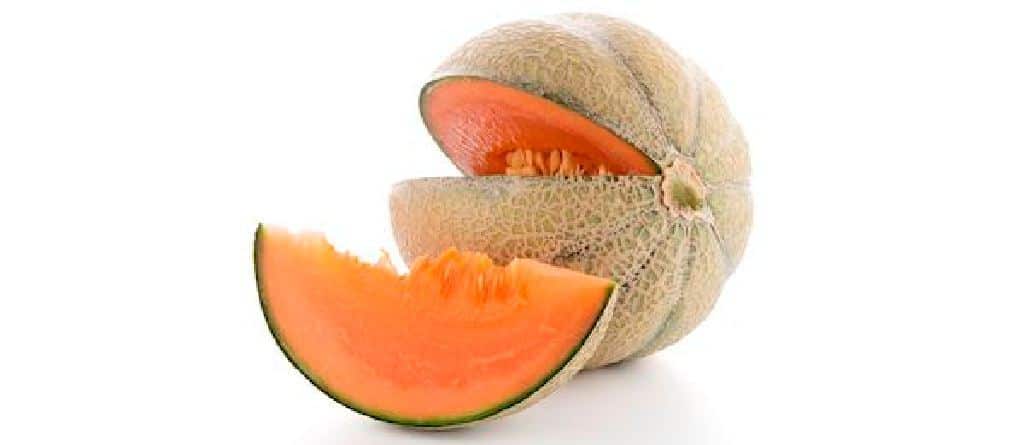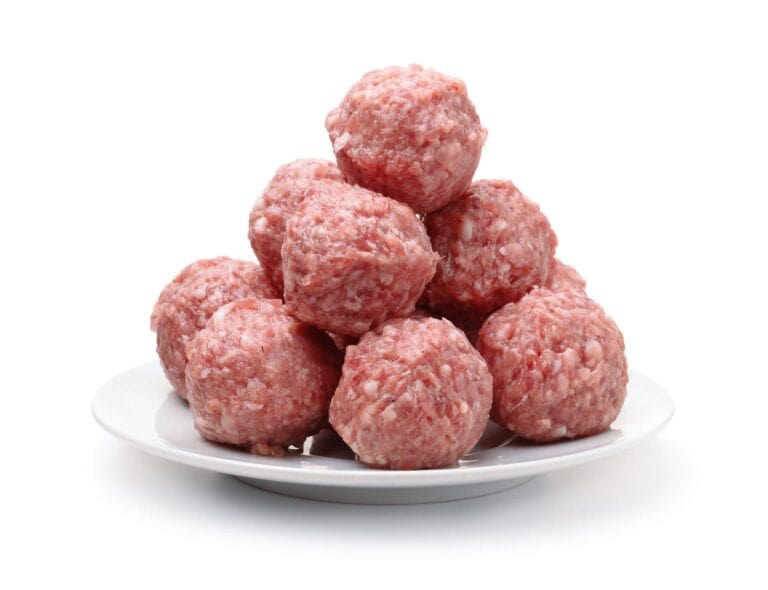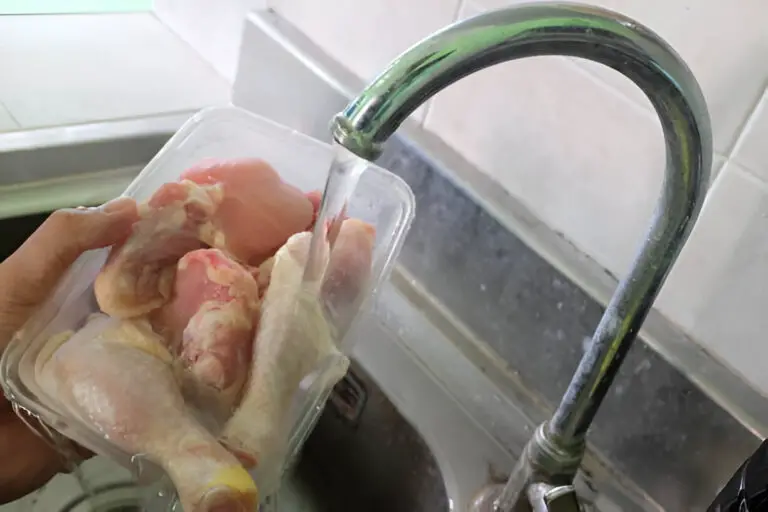How To Tell if Cantaloupe Is Bad by Taste: Is It Ripe or Rotten?

There is nothing more frustrating than cutting into a cantaloupe only to find out it has gone bad. It can be tricky to determine whether a cantaloupe is still good just by looking at it from the outside.
Luckily, you can use your sense of taste to determine whether or not your cantaloupe is ripe or rotten. In this article, we will go over some simple tips to help you tell if your cantaloupe is bad just by tasting it. We’ll also talk about how to determine if a cantaloupe is ripe and ready to eat or if it’s past its prime.
So, whether you’re at the grocery store or have a cantaloupe sitting in your kitchen, read on to learn how to tell if your cantaloupe is good or bad.
Signs of Ripe Cantaloupe
Cantaloupe is a delicious and juicy fruit that can be enjoyed in a variety of ways. But how can you tell if a cantaloupe is ripe and ready to eat? Fortunately, there are a few signs that can help you identify a ripe cantaloupe.
- First, check the skin. A ripe cantaloupe will have a slightly rough texture and a golden, yellowish color. The skin should also have a slight give when you press on it with your finger, indicating that the fruit is soft and ripe.
- Next, give the cantaloupe a sniff. A ripe cantaloupe will have a sweet, fruity aroma. If the cantaloupe doesn’t have any smell, it may not be fully ripe yet. If it has a sour or unpleasant smell, it may start to spoil.
- Lastly, tap the cantaloupe with your knuckles. A ripe cantaloupe will produce a deep, hollow sound, indicating that it is full of juice and ready to eat. If the sound is flat or dull, the cantaloupe may be overripe or not quite ripe enough.
It’s important to note that not all cantaloupes will exhibit the same signs of ripeness, and some may be ready to eat even if they don’t meet all of the criteria above. It’s up to your personal taste and preference to determine when a cantaloupe is ripe enough for you to enjoy.
How To Tell if Cantaloupe Is Bad by Taste
Cantaloupes are a sweet and refreshing fruit, but like any produce, they can go bad over time. One way to tell if a cantaloupe is no longer fresh is by its taste. A bad cantaloupe can have a bitter, sour, or unpleasant flavor, making it unappetizing to eat.
One of the main reasons why a cantaloupe can go bad is due to over-ripening. As a cantaloupe ripens, the sugars in the fruit break down and create a sweet and juicy flavor.
However, if the cantaloupe is left to ripen for too long, it can become too soft and mushy, resulting in a sour or fermented taste.
Another reason for a bad taste in cantaloupe is bacterial growth, which can occur when the fruit is not stored properly or is contaminated during handling.
To determine if a cantaloupe is bad by taste, it’s essential to use your senses. The first thing to do is to give the cantaloupe a good sniff. A fresh cantaloupe will have a sweet, fruity aroma, while a bad cantaloupe will have a pungent or sour smell. If the cantaloupe smells off or unpleasant, it’s likely past its prime.
Next, it’s time to take a bite of the cantaloupe. A fresh and ripe cantaloupe should have a sweet and juicy flavor with a slightly crisp texture. If the cantaloupe tastes sour, bitter, or has a fermented flavor, it’s a sign that it has gone bad. Additionally, if the texture is mushy, slimy, or mealy, it’s also a sign that the cantaloupe is no longer fresh.
Another thing to consider when checking the taste of cantaloupe is its color. A ripe cantaloupe should have a golden yellow color, with a slightly greenish tint. If the cantaloupe has turned brown or has large bruises or soft spots, it’s a sign that it’s no longer fresh and may have a bad taste.
Factors That Affect the Taste of Cantaloupe
Cantaloupes are known for their sweet, juicy flavor, but what if your cantaloupe tastes off, sour, or even your cantaloupe tastes like acetone and alcohol? Several factors can affect the taste of cantaloupe, including the fruit’s ripeness, storage conditions, and handling.
- Ripeness is a crucial factor in determining the taste of cantaloupe. A ripe cantaloupe should have a sweet aroma and give slightly when pressed on the stem end. If the fruit is underripe, it may taste bland and lack sweetness. On the other hand, an overripe cantaloupe may taste sour or have an off-flavor.
- Storage conditions can also affect the taste of cantaloupe. If stored in a cool, dry place, the fruit can last up to a week, but if kept at room temperature or exposed to moisture, it can quickly spoil and develop an unpleasant taste. Additionally, if the fruit is stored next to other fruits or vegetables that produce ethylene gas, such as apples or bananas, it can ripen too quickly and develop an overripe taste.
- The handling of cantaloupe during harvest, transport, and storage can also affect the taste. If the fruit is mishandled or dropped, it can bruise and develop off-flavors. Furthermore, if the fruit is not washed properly before consumption, it can harbor harmful bacteria that can cause foodborne illness, leading to a sour or bitter taste.
What To Do if You’ve Eaten Bad Cantaloupe
Cantaloupes are a sweet and juicy fruit that many people enjoy. However, if you’ve eaten bad or rotten cantaloupe, it can lead to unpleasant symptoms. Food poisoning can happen if you eat a cantaloupe that has been tainted. This can cause nausea, vomiting, diarrhea, fever, and stomach pain. In some cases, it can also lead to serious health complications.
If you suspect that you’ve eaten bad cantaloupe, the first thing you should do is to stop eating it immediately. It’s also important to stay hydrated by drinking plenty of water and electrolyte solutions to replace lost fluids and minerals. Avoid consuming other foods until you feel better, as it can put additional strain on your digestive system.
WARNING
If your symptoms persist or worsen, seek medical attention immediately. Your doctor can help diagnose your condition and provide appropriate treatment. They may also suggest taking a sample of your poop to find out which pathogen is causing your symptoms.
To prevent food poisoning from cantaloupe, it’s important to practice good food safety habits. Make sure to wash your hands thoroughly before handling any food, including cantaloupe. Additionally, wash the cantaloupe thoroughly before cutting it to remove any dirt or bacteria on the surface. Store cantaloupe in the refrigerator at or below 40°F to prevent bacterial growth.
If you’re unsure about the freshness of your cantaloupe, it’s better to err on the side of caution and discard it. Remember, it’s always better to be safe than sorry when it comes to food safety.
Tips for Storing Cantaloupe To Prevent Spoilage
Cantaloupes are a delicious and nutritious fruit that can be enjoyed in many ways. However, they are also perishable and need to be stored properly to prevent spoilage. Here are some tips for storing cantaloupe to keep them fresh for as long as possible:
- Choose a ripe cantaloupe: The first step to storing cantaloupe properly is to choose a ripe one. A ripe cantaloupe will have a slightly soft feel when gently pressed on the stem end and a sweet aroma.
- Keep it cool: Cantaloupes should be stored in a cool, dry place, away from direct sunlight. The ideal temperature for storing cantaloupe is between 45-50°F (7-10°C). You can store it in the refrigerator, but it’s best to keep it away from other fruits and vegetables that produce ethylene gas, which can cause it to ripen too quickly.
- Store it whole: It’s best to store cantaloupe whole until you’re ready to eat it. Once you cut it open, it can be wrapped tightly in plastic wrap or stored in an airtight container in the refrigerator for up to 3-4 days.
- Clean it before storing: Before storing cantaloupe, it’s important to wash it thoroughly to remove any dirt or bacteria. Use a clean produce brush and cold water to scrub the skin of the cantaloupe.
- Use a paper towel: After washing the cantaloupe, use a paper towel to dry it off before storing it. Excess moisture can lead to mold growth and spoilage.
- Don’t stack them: Avoid stacking cantaloupes on top of each other, as this can cause bruising and damage to the skin, which can lead to spoilage.
- Freeze it: If you have too many ripe cantaloupes and are worried about them spoiling, you can freeze them. Simply cut them into small pieces and place them in a single layer on a baking sheet. Once frozen, transfer them to an airtight container or freezer bag and store them in the freezer for up to 6-8 months. Frozen cantaloupe can be used in smoothies or as a frozen treat on a hot day.
By following these tips, you can enjoy fresh, delicious cantaloupe for longer and reduce waste from spoiled fruit.






